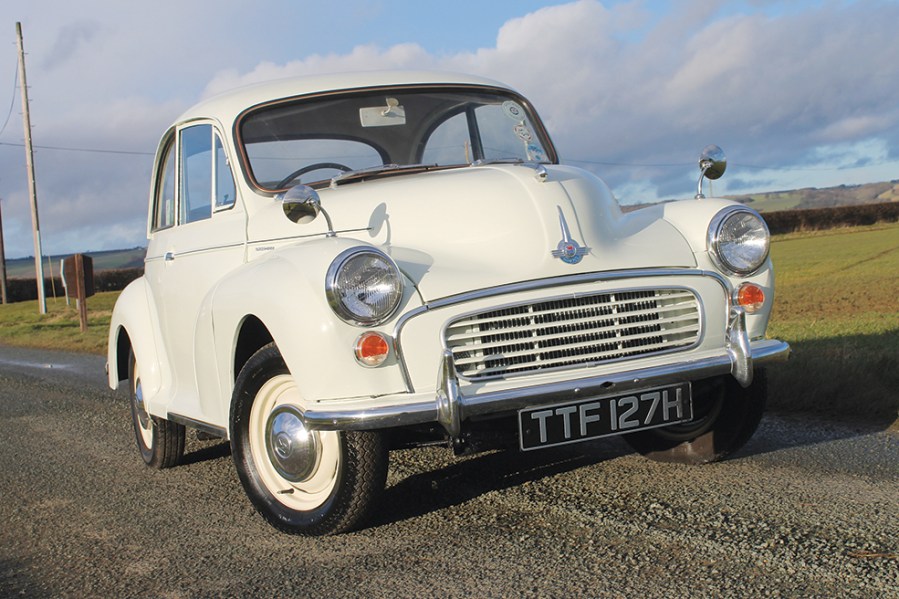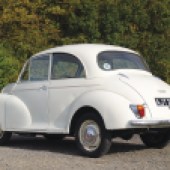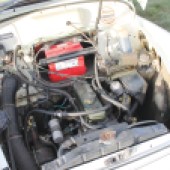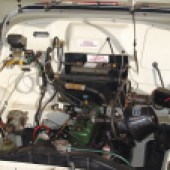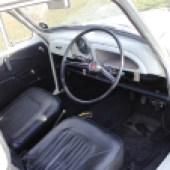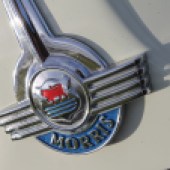The car that set the classic car scene in motion, the Morris Minor remains one of the most accessible classics. Here’s what you need to know
A decade ago, examples of the Morris Minor were still being pulled out of barns and garages and it wasn’t uncommon to come across a shabby but sound Minor which had simply been sitting unused for years. Today though, the passion for barn-finds has ensured that all the cars peacefully slumbering away have been dragged out and auctioned off, which has the knock-on effect that most Minors you’ll encounter in 2020 have been partly restored at least once.
Buying a Morris Minor today is an exercise in spotting bodges rather than knowing the traditional rot spots – especially at the cheaper end of the market. Don’t let that put you off – the Morris Minor saloon remains the practical, easy-to-own classic it has been since it kick-started the classic car movement way back when. There’s simply nothing you can’t buy for them, they’re easy to work on, easy to garage and in Minor 1000 form have the pace to keep up with modern traffic.
The car was conceived in the 1940s as a replacement for the ageing prewar Morris Eight. The brief was seen as an opportunity for Issigonis to condense all his innovative design ideas into a single vehicle and it was this which created the Minor’s basic design: the body style said to be influenced by Packard, the torsion-bar suspension, the wheel-at-each-corner layout and generous interior space.
The design had originally called for a flat-four engine but conservative Morris boss Lord Nuffield dictated that an existing conventional powerplant be used instead. The result was that the car was launched in 1948 using the old side-valve engine from the Morris Eight.
Although smooth, it offered only 30bhp, but salvation came with the creation of BMC in March 1952 with Austin man Leonard Lord at the helm. Lord phased out the old Morris engine and in 1953 the Series 2 Minor received the A-Series engine developed for the Austin A30 as well as an Austin rear axle.
In October 1953 the wood-framed Traveller joined the range, while in 1956 the Morris Minor 1000 arrived with a one-piece screen and larger rear window, reprofiled rear wings and losing the winged boot motif.
The 1000 tag reflected the newly enlarged 948cc A-Series with stronger crank and uprated bearings, paired to an improved gearbox and high final drive which shaved an incredible 20 seconds off the 0-60mph time.
In 1960, the one millionth Minor was celebrated with the lilac ‘Minor 1000000’ special edition. Flashing indicators were added in 1961, while in 1962 the engine was enlarged again to 1098cc, paired with stronger synchromesh, a 7.5-inch clutch and larger eight-inch front brake drums. In 1963 revised light clusters incorporated separate orange segments for the indicators, while the clap-hands wipers were swapped for the modern tandem type.
A key starter was fitted from October 1964 and the passenger glovebox received a lid, the seats became a single colour and a plainer safety steering wheel was fitted. And that was pretty much it as BMC concentrated on the Mini and the 1100 before Minor production was wound down, the convertible ending in 1969, the saloons in November 1970 and the Traveller clinging on until April 1971.
Bodywork
The Minor was an early example of unitary construction and to ensure the strength of the bodyshell it’s a more complex affair than you might expect given the utilitarian nature of the car. The Minor’s reputation as a DIY-friendly classic means many have received the attentions of the home Mig welder but there are plenty of box sections and double-skinned areas which makes repairing serious rust a tricky business.
Spend time in the workshops of any Morris Minor specialist and you’ll see that good metal often has to be cut away in order to effect repairs inside box sections and if not done carefully, this can mean that crucial parts of the shell end up out of alignment. Workshops performing extensive body repair on the Minor shell will often fit cross-bracing before embarking on major metal surgery to prevent this.
How can you tell? Sills and floors covered in small patch repairs are a sure sign of the DIY welding torch, while the fit of the doors is a good clue as to the alignment of the A-pillar and sills – although do remember that this is a 1940s Morris so don’t expect Lexus-like panel gaps.
The gap between the front wings and bonnet is another clue as to the quality of previous work. The wings bolt on and if the mounting flange or the general inner arch and bulkhead have been disturbed then they won’t fit properly. A stack of washers under the mounting bolts indicates a quick fix.
Meanwhile, check the traditional Minor rust spots: the crossmembers under the front seats, the inner part of the sills under the carpets and the spring hanger areas for the rear suspension. The front crossmember which supports the front suspension torsion bars is also critical, while the floors are also worth a check.
Other rust should be obvious, like crusty door bottoms and frilly headlight apertures, but all the panels you’ll need are available.
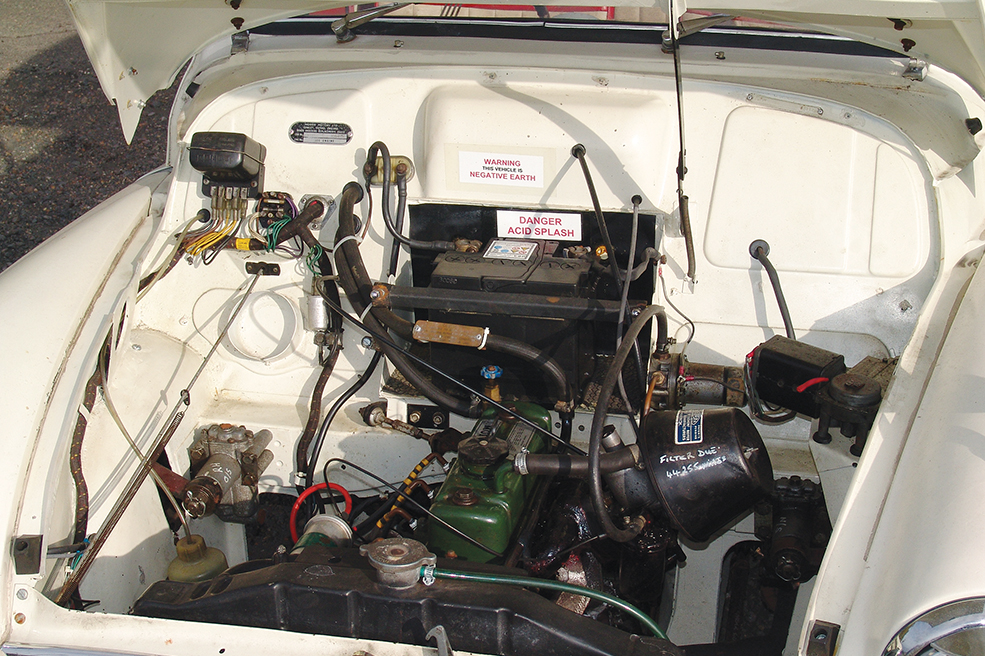
Engine and transmission
The sidevalve unit is something of a specialist niche as indeed is the early 803cc A-Series, so for most purposes it will be the 948 or 1098cc A-Series you’ll be looking at. The engine is very much a known quantity and problems should be both obvious and easy to diagnose.
Smoking suggests tired valve seals or guides and as for oil leaks, it’s often said that a Minor not leaking a bit of oil is probably empty. If an oil leak is really bad, then suspect the rear crankshaft oil seal, or the front seal. The sump gasket and the rocker cover gasket are also prone to leak.
The strongest gearboxes came with the 1098cc cars, but worn synchromesh can arise on all examples, giving crunchy changes – after all, even the youngest is still nearly 50 years old. Either learn to live with it or hunt down a good used replacement if you don’t fancy the cost of a rebuild. If the box jumps out of gear as you lift off the throttle sharply, it’s harder to live with and will need more immediate attention.
No Minor ever featured synchromesh on first gear, so if you plan to do a lot of town driving then learn the double-declutching technique to achieve a crunch-free change down to first on the move. It’s a satisfying skill and much better than slipping the clutch in stop-and-go traffic.
Suspension, steering and brakes
The Minor uses a kingpin design for the front suspension which means regular greasing is required. Check for evidence that the grease nipples have been used within living memory and also check the trunnions for wear: with the front wheel off the ground, grasp the tyre and top and bottom and attempt to waggle it, with any significant movement evidence that work is needed.
If the rear end seems to be sitting low, the rear leaf springs may simply have sagged and if the ride is excessively bouncy, suspect the lever arm dampers are past their best. Reconditioned units are around £70 a pair and simple to fit.
Standard kit is unassisted drum brakes all-round and when set up properly and in good order, they do stop the 800kg Minor perfectly well. By today’s standards the pedal pressure required is high though, which can put off drivers used to modern cars, especially in urban traffic and a useful upgrade is a remote brake servo. This works well with the standard drum system and although a front disc conversion is a popular upgrade, it depends on how you intend to drive the car.

Interior and trim
The Minor’s cabin is both small and relatively spartan, meaning that a tired interior needn’t put you off at the right price. Indeed, smartening up a shabby cabin can be a rewarding DIY project, with all the parts available from the likes of Newton Commercial. Carpet sets involve some glueing and cutting but it’s all basic DIY, while the seat covers and padding can be stripped off the existing frames with basic hand tools and replaced with new ones.
In standard form, the Minor’s electrical kit amounts to little more than lights, heater fan and wipers which means the original dynamo is up to the task. The demands of modern life such as brighter headlights, modern audio and phone charging socket will mean that the dynamo can struggle to charge at idle speeds, so an alternator upgrade is a good move.
Morris Minor: our verdict
While not quite the starter-classic bargain it once was, the Morris Minor is a solid choice for those who like the idea of a DIY-friendly model to form the basis of a rolling restoration or practical daily driver. Parts and specialist support is great and modern upgrades are easily made. Beware rusty examples and you should be left with a great-driving, practical and crowd-pleasing classic car.

